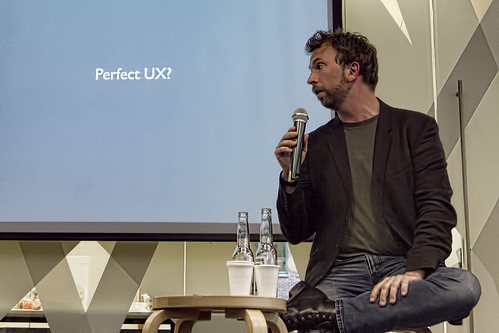Get personal with personas
“Tim is 44. He likes to create engaging experiences for users, and will spend far too long on the tiniest detail that he thinks makes a subtle difference.”
On this scale he rates highly. On this scale he rates pretty low.
Hopefully, what motivates Tim and determines his relationship with company X, happens to be something that company X happens to be releasing in the next version of product Y.
This places Tim on a matrix that fits in the bottom corner of the page we don’t know what to fill with.”
Persona pitfalls
If this sounds familiar, then you’ve also been on one of those projects where the creation of personas are merely a tick a box in the project plan, and not seen as an opportunity to really understand customer behaviours and motivations, to represent them as accurately as possible throughout the development of a product or service.
Tick box personas are worse than useless. They’re actually anti-personas; nominally a reflection of stakeholder expectations that woefully misrepresents real users.
But let’s be clear. Creating personas that enrich understanding, and guide our design principles is notoriously difficult, even allowing for due diligence on researching users and understanding:
- behaviours
- needs
- motivations
- peripheral influences
- personalities
- back stories
and so on. It takes time to develop, iterate and review personas. It requires a breadth of understanding and skill of interpretation that certainly I don’t pretend to have. I mean, I can create a persona in five minutes; but not a useful one.
Persona benefits
But if they’re done well, personas can really drive a design conversation. What I mean by that, since I just strayed in to slidespeak there, is that well-crafted personas help you understand and validate what’s important from a user’s perspective.
I recently spent some time with a colleague at Foolproof, Mara Protano, developing user journeys and sketching out concepts for a financial services client. Mara had invested a huge amount of effort in researching user types, identifying their experiences and motivations. This allowed her to design, refine, distil and validate a small set of personas that provided a clear reference for us as we began to consider scenarios and usage patterns.
These were proper personas, backed up by a room full of research, and they made a huge difference to the project. You can’t just populate a template and hope to be successful. You have to start with a blank canvas every time and be prepared to justify, argue, and back yourself up when challenged on your deliverables. With her depth of understanding, Mara was able to do this with confidence and clarity whenever we questioned our assumptions.
Persona development can be contradictory. We use personas to validate and stress-test user journeys, scenarios, navigation models and so on, but we often don’t stress-test the personas themselves to see if they withstand scrutiny.
Go persona yourself
To illustrate just how hard it is to create meaningful personas, and how easy it is for them to misrepresent, try this: create a set of personas for your own family (including pets), and then give them to someone who doesn’t know you. Ask them to draw a picture of your family and give it to somebody else who doesn’t know you. Then get that person to describe your family to you. It’s weird, but eye-opening. Imagine those individuals as, say, researcher, UX designer and creative designer, and you’ll see how easily poorly executed personas break down.

